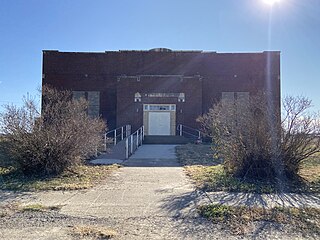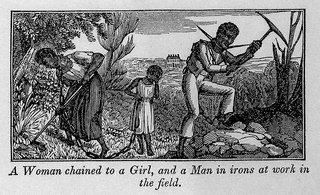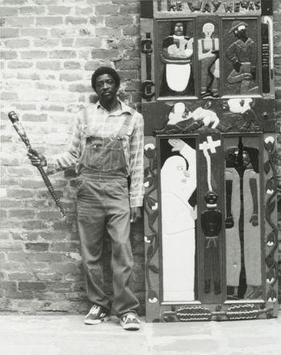
Sojourner Truth was an American abolitionist and activist for African-American civil rights, women's rights, and alcohol temperance. Truth was born into slavery in Swartekill, New York, but escaped with her infant daughter to freedom in 1826. After going to court to recover her son in 1828, she became the first black woman to win such a case against a white man.

The Learning Tree is a 1969 American coming-of-age film written, produced and directed by Gordon Parks, who also scored the film. It depicts the life of Newt Winger, a teenager growing up in Cherokee Flats, Kansas, in the 1920s and chronicles his journey into manhood marked with tragic events. Based on Parks' 1963 semi-autobiographical novel of the same name, The Learning Tree was the first film directed by a black filmmaker for a major American film studio, Warner Bros.-Seven Arts.

Dunlap is a city in Morris County, Kansas, United States. As of the 2020 census, the population of the city was 27.

The Great Migration, sometimes known as the Great Northward Migration or the Black Migration, was the movement of six million African Americans out of the rural Southern United States to the urban Northeast, Midwest, and West between 1910 and 1970. It was substantially caused by poor economic and social conditions due to prevalent racial segregation and discrimination in the Southern states where Jim Crow laws were upheld. In particular, continued lynchings motivated a portion of the migrants, as African Americans searched for social reprieve. The historic change brought by the migration was amplified because the migrants, for the most part, moved to the then-largest cities in the United States at a time when those cities had a central cultural, social, political, and economic influence over the United States; there, African-Americans established culturally influential communities of their own. According to Isabel Wilkerson, despite the loss of leaving their homes in the South, and the barriers faced by the migrants in their new homes, the migration was an act of individual and collective agency, which changed the course of American history, a "declaration of independence" written by their actions.

African-American history started with the arrival of Africans to North America in the 16th and 17th centuries. Former Spanish slaves who had been freed by Francis Drake arrived aboard the Golden Hind at New Albion in California in 1579. The European colonization of the Americas, and the resulting Atlantic slave trade, led to a large-scale transportation of enslaved Africans across the Atlantic; of the roughly 10–12 million Africans who were sold by the Barbary slave trade, either to European slavery or to servitude in the Americas, approximately 388,000 landed in North America. After arriving in various European colonies in North America, the enslaved Africans were sold to white colonists, primarily to work on cash crop plantations. A group of enslaved Africans arrived in the English Virginia Colony in 1619, marking the beginning of slavery in the colonial history of the United States; by 1776, roughly 20% of the British North American population was of African descent, both free and enslaved.
The civil rights movement (1896–1954) was a long, primarily nonviolent action to bring full civil rights and equality under the law to all Americans. The era has had a lasting impact on American society – in its tactics, the increased social and legal acceptance of civil rights, and in its exposure of the prevalence and cost of racism.

Nicodemus is an unincorporated community in Graham County, Kansas, United States. As of the 2020 census, the population of the community and nearby areas was 14. The community was founded in 1877 and is named for the Biblical figure Nicodemus.

Benjamin "Pap" Singleton was an American activist and businessman best known for his role in establishing African American settlements in Kansas. A former slave from Tennessee who escaped to freedom in Ontario, Canada in 1846, he soon returned to the United States, settling for a period in Detroit, Michigan. He became a noted abolitionist, community leader, and spokesman for African-American civil rights.
Hosea Hudson was an African-American labor leader in the Southern United States.

"Marching Song of the First Arkansas Colored Regiment" is one of the few Civil War-era songs inspired by the lyrical structure of "The Battle Hymn of the Republic" and the tune of "John Brown's Body" that is still performed and recorded today. The "Marching Song" has been described as "a powerful early statement of black pride, militancy, and desire for full equality, revealing the aspirations of black soldiers for Reconstruction as well as anticipating the spirit of the civil rights movement of the 1960s." The song's lyrics are attributed to the regiment's white officer, Captain Lindley Miller. An almost identical song, "The Valiant Soldiers," is attributed to Sojourner Truth in post-Civil War editions of her Narrative. Recent scholarship supports Miller as the original author, or at least compiler, of the song.
Buck and the Preacher is a 1972 American Western film released by Columbia Pictures, written by Ernest Kinoy and directed by Sidney Poitier. Poitier also stars in the film alongside Harry Belafonte and Ruby Dee.

Nell Irvin Painter is an American historian notable for her works on United States Southern history of the nineteenth century. She is retired from Princeton University as the Edwards Professor of American History Emerita. She has served as president of the Organization of American Historians and as president of the Southern Historical Association, and was appointed as chair of MacDowell's board of directors in 2020.
The civil rights movement (1865–1896) aimed to eliminate racial discrimination against African Americans, improve their educational and employment opportunities, and establish their electoral power, just after the abolition of slavery in the United States. The period from 1865 to 1895 saw a tremendous change in the fortunes of the Black community following the elimination of slavery in the South.

The History of White People is a 2010 book by Nell Irvin Painter, in which the author explores the idea of whiteness throughout history, beginning with ancient Greece and continuing through the beginning of scientific racism in early modern Europe to 19th- through 21st-century America.

George T. Downing was an abolitionist and activist for African-American civil rights while building a successful career as a restaurateur in New York City; Newport, Rhode Island; and Washington, D.C. His father had been an oyster seller and caterer in Philadelphia and New York City, building a business that attracted wealthy white clients. From the 1830s until the end of slavery, Downing was active in the Underground Railroad, using his restaurant as a rest station for refugees on the move. He built a summer season business in Newport, and made it his home. For more than 10 years, he worked to integrate Rhode Island public schools. During the American Civil War (1861–1865), Downing helped recruit African-American soldiers.

A subscription school was a type of private school that operated in the 19th century in rural areas of the United States before the rise of common schools, and also in parts of the United Kingdom.

Herbert Singleton (1945–2007) was an American bas-relief sculptor and painter based in New Orleans, Louisiana. His work documented the tribulations of life in the Algiers neighborhood of New Orleans.

Col. William Murrell, Jr. also known simply as William Murrell, was an American newspaper editor, and politician. He represented Madison Parish in the Louisiana House of Representatives from for two terms.
The Most Southern Place on Earth: The Mississippi Delta and the Roots of Regional Identity is a nonfiction book by James C. Cobb, published in 1992 by Oxford University Press. It is about the Mississippi Delta region.
https://www.nationalarchives.gov.uk/education/resources/civil-rights-in-america/eisenhower-little-rock/U.S.+educational+institutions+for+Black+people+(late-1860s–1960s)















